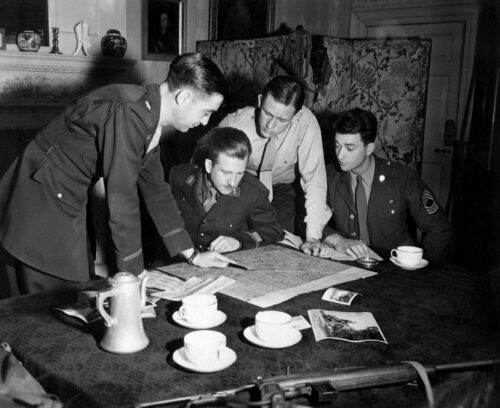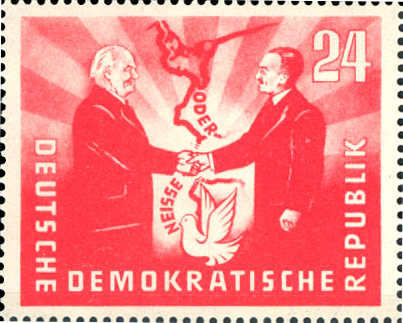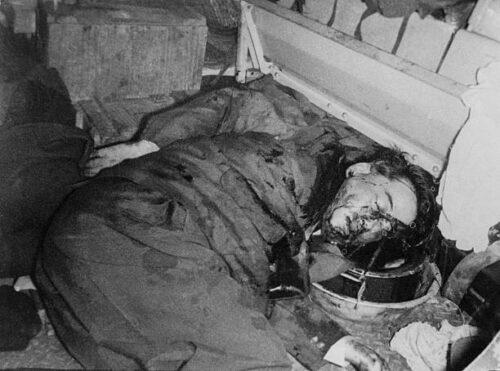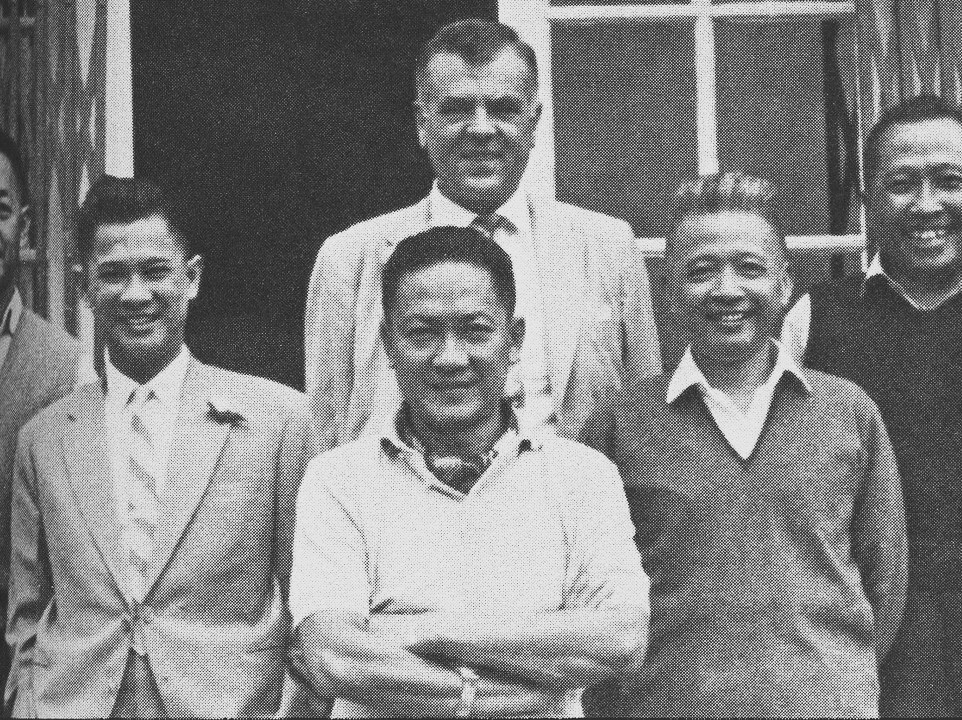Lucien Conein with South Vietnamese general involved in 1963 coup against Diệm,
Lucien Emile “Lou” Conein was born on November 29, 1919, in Paris, France. At the age of five, he moved to Kansas City to live with his aunt. In 1939, at the start of World War II, Conein joined the French Army but switched to the U.S. Army within a year due to the German invasion. As a native speaker of French, he was asked to volunteer for the Office of Strategic Services (OSS).
OSS Officer
The OSS was the United States first central intelligence agency, established during World War II. The OSS was formed in June 1942 to coordinate espionage activities behind enemy lines for all branches of the U.S. Armed Forces. Its functions included gathering intelligence, aiding resistance groups, sabotaging enemy assets, and planning for the post-war period The OSS was dissolved in September 1945, shortly after the end of the war. Its intelligence tasks were later resumed by its successors, the Strategic Services Unit (SSU), the Department of State’s Bureau of Intelligence and Research (INR) and the independent Central Intelligence Agency (CIA).
In 1944, Conein was ordered to assist the French Resistance during the Allied landings in Normandy. He worked with the Jedburghs, a group directed by the OSS and the British Special Operations Executive (SOE). During this period, Conein began working and living with the Corsican mafia, then known as the Corsican Brotherhood, an ally of the Resistance. Led by the Guerini brothers [fr] (Antoine and Barthélémy, nicknamed “Mémé”). It sided with the anti-communist SFIO faction within the French Resistance. Conein was briefly sent to Vietnam to help organize attacks against the Japanese Army and was awarded the Bronze Star Medal for operations conducted during this period.

CIA Officer
After 1945, during the Cold War period, a time characterized by political and military tension between the Western Bloc (led by the U.S.) and the Eastern Bloc (led by the Soviet Union), Lucien Conein played a significant role in the U.S. intelligence operations. Conein retained his military rank and position as a cover, working for the SSS, CIG and ultimately the CIA).
In 1951, the CIA assigned Conein to establish a base in Nuremberg, Germany. He was assisted by Ted Shackley, another notable figure in the CIA. The main purpose of this base was to send agents into Warsaw Pact countries to gather information needed to fight the Soviet Union during the Cold War. However, the venture was not a great success and the governments in both Poland and Czechoslovakia announced that they had smashed several CIA espionage rings.
Later, Conein worked with William King Harvey in Berlin. Harvey was a senior CIA officer who played a significant role in the agency’s operations during the Cold War. Together, they continued the efforts to gather intelligence and conduct covert operations against the Soviet Bloc. He also reportedly trained paramilitary forces in Iran.

In 1954, he was sent to work against the communist government of Ho Chi Minh in North Vietnam. At first, he was involved in a propaganda campaign to persuade Southern Vietnamese not to vote for the communists and then to help with arming and training local tribesmen, called the Montagnards, working under CIA station chief William Colby, who would later become Director of Central Intelligence (DCI).
In 1956, Conein was assigned to the U.S. Army’s 77th Special Forces Group, which was later reorganized into the 7th Special Forces Group. Conein’s role was “to get the 77th SFG up to the standard”. Conein later returned to Vietnam for the CIA.
Conein is best known for his instrumental role in the November 1963 coup against Ngô Đình Diệm, which led to Diệm’s assassination. He served as the liaison officer for Henry Cabot Lodge Jr., the Ambassador to South Vietnam, with the coup plotters and delivered $42,000 of the known cash disbursements to them. Diệm’s methods, including imprisoning and sometimes killing those who opposed his regime, had alienated many South Vietnamese, especially Buddhists.
The Kennedy administration had been informed about the coup’s preparations. However, Cable 243, which was sent from the U.S. Department of State to Ambassador Lodge, clarified that the U.S. policy was not to intervene or prevent it. Conein’s actions were in accordance with this policy as directed by Ambassador Lodge.

In 1968, Lucien Conein transitioned from his role at the CIA and embarked on a new career as a businessman in South Vietnam. A few years later, in 1972, he was appointed by President Nixon to serve as the head of covert operations for the Drug Enforcement Administration (DEA). After a decade of service, Conein retired from his position at the DEA in 1984.
Legacy
Lucien Conein passed away from a hear attack on June 3, 1998, at the age of 79. His life and career were marked by courage, skill, and a flair for the dramatic. Despite controversies and criticisms, Conein remains a legendary figure in the history of the OSS and CIA.
Resources
Office of Strategic Services Society
OSSSociety.org
USASOC OSS Website (Official US Army Website)
www.soc.mil/OSS/index.html
Central Intelligence Agency
CIA.gov
*The views and opinions expressed on this website are solely those of the original authors and contributors. These views and opinions do not necessarily represent those of Spotter Up Magazine, the administrative staff, and/or any/all contributors to this site.

